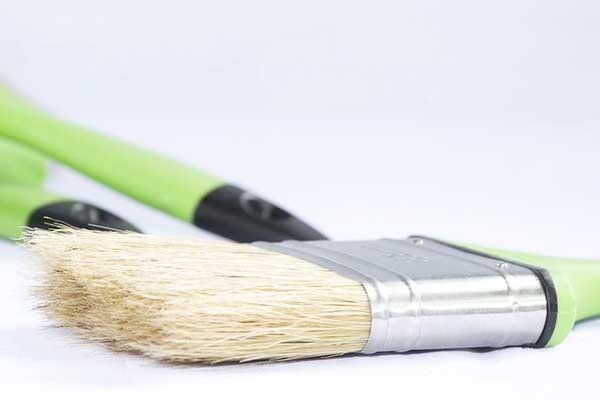What Temperature to Paint outside in Canada
It’s finally springtime in Canada! The snow is melting, the birds are chirping, and the sun is shining.
As you may have already guessed, the temperature you need to paint outside in Canada depends on a few factors.
Namely, whether or not the climate is cold in general and what activity you plan to do when painting outside.
It’s the perfect time to break out the paintbrush and freshen up your home’s exterior. But before you start painting, there’s one crucial question you need to answer: what temperature should you paint outside in Canada?
The answer to this question isn’t as simple as you might think. Yes, the weather needs to be warm enough that the paint will dry properly. But there are other factors to consider, such as humidity and wind speed.
We’ve put together a quick guide to help you figure out the best time to paint your home’s exterior. Read on to learn more about the ideal temperature for painting outside Canada.
What’s the Ideal Temperature for Painting Outside?
The ideal temperature for painting outside is between 10 and 30 degrees Celsius. However, there are a few other factors you need to consider when deciding whether or not to paint.
a) You’ll want to make sure that the paint you use is suitable for your climate. This means that the temperature change will not affect its usefulness, mainly because you’ll be outdoors. If you live in a cold climate, you’ll need more opaque paint; if you live in a warm one, it is best to go with translucent paints as they will help reflect light better.
After all, temperatures can change from one day to the next in Canada, so if you’re planning to paint outside, you’ll need paint that can withstand any weather conditions.
b) The temperature of your paintbrush is also something you need to consider. You will want the brush to be at room temperature upon application. If it’s not, then while it may still be used after painting, the different temperatures outdoors most likely won’t be affected.
c) The last factor to consider is the wind speed. Generally, the wind will affect the temperature of your paint. For instance, when there are many breezes, you’ll want to be more conservative in how much you apply and make sure it covers adequately before starting another area.
d) Keep in mind that the type of paint you use will directly affect the appearance of your home. If painting outside with a brush, it’s best to wait until the paint has dried before adding additional coats. So it’s best to choose wisely to avoid repainting your home in the future.
e) For your painting activity outside to be more enjoyable and straightforward, plan! Make sure that you’re ready for this activity by ensuring that all necessary tools, supplies, and materials are on hand. This way, you won’t have to worry about any problems arising later on during this project.
f) If you’re planning to paint large areas outdoors, you may want to make some preparations beforehand. The great idea is to rent a machine that will help disguise the smell when you start painting outdoors! This way, you’ll be able to enjoy the fresh air while still getting your project done.
*tips: In general, it’s always a good idea to experiment before you paint outside of your home. There’s a greater chance that you’ll have the best experience possible.
Also, if you have other projects in mind for your home and don’t want to spend too much time on this project, you can check out our article about how to paint over an old painting. *
How Temperature Affects Paint Application
Applying paint quickly becomes a challenge in the winter. As the temperature cools, it takes longer for the paint to dry, making it more susceptible to moisture and mold from the colder air.
You’ll want to apply two coats of paint on your house, one to offer protection and one as a primer. When you start painting, the temperature must be between 10 °C and 23 °C.
When choosing paint, you will want to select exterior latex paint since they are easier to clean than oil-based paints, especially in the winter. While you might opt for an oil-based paint when going over an old surface, latex paints can be easily removed by water.
Perhaps the most crucial part of the paint application process is to protect your project from the elements. To do this, you need to use proper protection for your project.
Protection against moisture
While the paint will dry quickly, it could still get wet if humidity is high or if it rains. The best way to prevent this is by using a spray-on water repellent. Our recommendation would be Ultra Shield Water Repellent (2 Litre).
What’s the Best Time of Day to Paint?
You’ll need to use your best judgment when deciding whether or not to paint. If the weather forecast calls for warm, dry conditions with little humidity and wind, it’s probably safe to go ahead and start painting.
Of course, you can always consult with a professional painter if you’re unsure about the best time to paint your home’s exterior. They’ll be able to give you specific advice based on the current weather conditions.
In addition to temperature, you’ll also need to consider the time of day when deciding when to paint. In general, it’s best to avoid painting in direct sunlight. The heat from the sun can cause the paint to blister and peel.
Instead, try to paint in the early morning or late afternoon when the sun is not as strong. If you must paint during the daytime, use sunscreen with a high SPF to protect your skin.
Conclusion
In Canada, it’s best to wait until you’re ready to paint before you start checking the weather forecast. You’ll be protected against potential paint-related hazards and have a more enjoyable painting experience.
If you live in a warm or humid climate, you’ll need to be careful not to let your paint dry out too much. You can use heat lamps or a hairdryer to apply paint on cold or damp surfaces.
At the end of the day, if this is the first time you’ve painted your home’s exterior and aren’t that familiar with painting outside, then it would be best to hire a professional painter.







